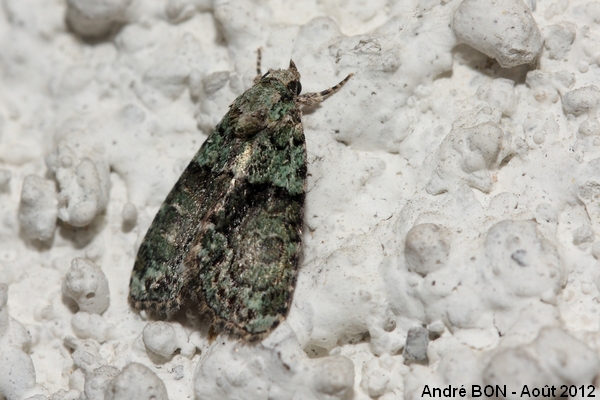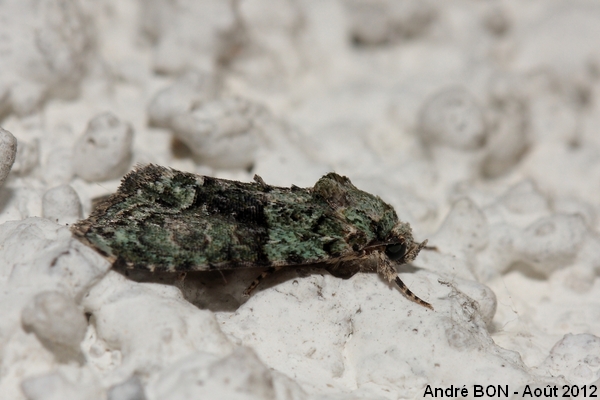

| Tree-lichen Beauty (Cryphia algae (Fabricius, 1775)) |


|
|
Scientific name: Cryphia algae (Fabricius, 1775) Common name: Tree-lichen Beauty French name: Bryophile vert-mousse Order: Lepidoptera Suborder: Heterocera Family: Noctuidae Subfamily: Bryophilinae Wingspan: 24-30 mm. Biotope: Forests of deciduous trees, parks and gardens, mainly with Oaks (Quercus) and Poplars (Populus). Geographic area: Southern and Central Europe, almost north to the Baltic Sea, western Asia, Near East. Flight time: July to September. Number of generations : 1 Caterpillar: Marbled with green and pale beige colour with black chevrons or black spots on the lateral sides and a dorsal row of white spots. The head is blackish. Host plant: Lichens of the Physcia and Parmelia genera growing on Oaks, Poplars and fruit trees. |
The Tree-lichen Beauty is a small Noctuidae moth with a rather variable green colour. The fore wings can be divided into four different areas. One basal area followed by a median band with an almost constant width. This median band is outlined on each side by a black line drawing some small arcs on the basal side. This band is green, or pale green, or whitish, or even yellowish (calligrapha form) and appears lighter coloured than the following post-median area. The darker post-median area is enlarged by a broad lobe next to the costal edge. The colour tones of the median area are found again on the submarginal area. The fringe is dotted with black and white. The hind wings are a uniform greyish brown colour. The Tree-lichen Beauty over winters as a caterpillar. It is not possible to visually differentiate the Tree-lichen Beauty from Cryphia pallida and Cryphia ochsi. However, in France, these last species are only found in the Mediterranean regions, as far as the Ardèche department northwards. |
| [To know more about the Tree-lichen Beauty] [Next picture] [Top] |

|
As we are in the region of Paris, there is no possible confusion. |
| [To know more about the Tree-lichen Beauty] [Previous picture] [Top] |

|
Side view of the same moth. |